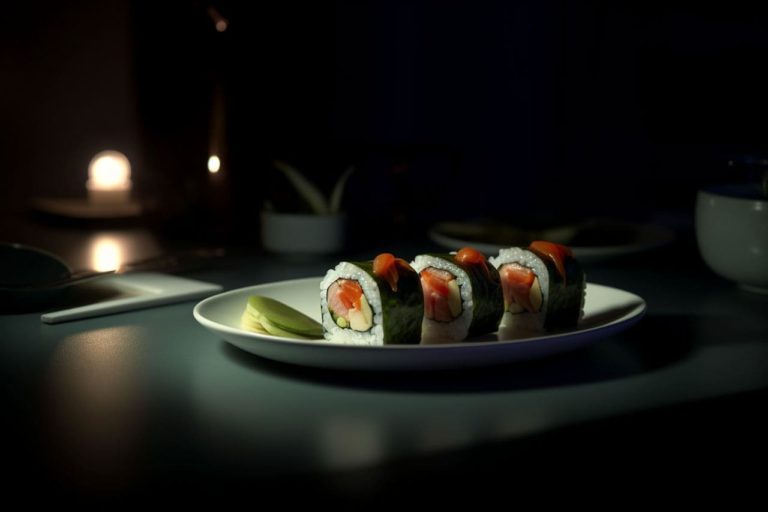Let’s talk about sushi. Now, I know what you’re thinking: “Raw fish? That doesn’t sound very appetizing.” But trust me, dear reader, sushi is so much more than that. It’s a culinary art form that requires skill, precision, and a deep appreciation for the ingredients.
At its core, sushi is a combination of vinegared rice and other ingredients, usually including seafood and vegetables. But don’t let its simplicity fool you – there’s a reason sushi chefs train for years to perfect their craft. Every step of the process, from selecting the freshest ingredients to shaping the rice just so, is crucial to creating a perfect roll.
Of course, sushi isn’t just about the taste. It’s also about the presentation. A well-made sushi roll is a thing of beauty, with its vibrant colors and intricate designs. It’s like a work of art that you can eat (and trust me, you’ll want to eat it).
Now, I know that some people are hesitant to try sushi because of the raw fish factor. But here’s the thing: not all sushi is raw. In fact, some of the most popular sushi rolls, like California rolls and shrimp tempura rolls, are made with cooked seafood. So even if you’re not a fan of raw fish, there’s still a world of sushi out there waiting for you to explore.
And let’s not forget about the health benefits of sushi. It’s low in calories, high in protein, and packed with vitamins and minerals. Plus, the seaweed used to wrap the rolls is a great source of iodine, which is important for thyroid function.
In short, sushi is more than just a meal – it’s an experience. So if you haven’t tried it yet, I highly recommend giving it a chance. Who knows, you might just discover your new favorite food.
Frequently Asked Questions About Sushi
Q: What is sushi?
A: Sushi is a Japanese dish that combines vinegared rice with a variety of ingredients, usually including seafood and vegetables.
Q: Is all sushi made with raw fish?
A: No, not all sushi is made with raw fish. In fact, some of the most popular sushi rolls, such as California rolls and shrimp tempura rolls, are made with cooked seafood.
Q: What are the health benefits of sushi?
A: Sushi is low in calories and high in protein, making it a nutritious meal choice. It’s also packed with vitamins and minerals, and the seaweed used to wrap the rolls is a great source of iodine.
Q: Why is sushi considered a culinary art form?
A: Sushi requires skill and precision in every step of the process, from selecting the freshest ingredients to shaping the rice and arranging the rolls. A well-made sushi roll is a work of art, with vibrant colors and intricate designs.
Q: Is sushi difficult to make at home?
A: Sushi can be a bit challenging to make at home, but with practice and patience, it’s definitely doable. You’ll need some specialized equipment, such as a bamboo sushi mat, and some high-quality ingredients. It’s also important to follow proper food safety guidelines when handling raw fish.
Q: What’s the best way to try sushi for the first time?
A: If you’re new to sushi, start with something simple, like a California roll or a shrimp tempura roll. These rolls are made with cooked seafood and have a milder flavor. You can also ask the sushi chef for recommendations and try a variety of rolls to find out what you like best.
